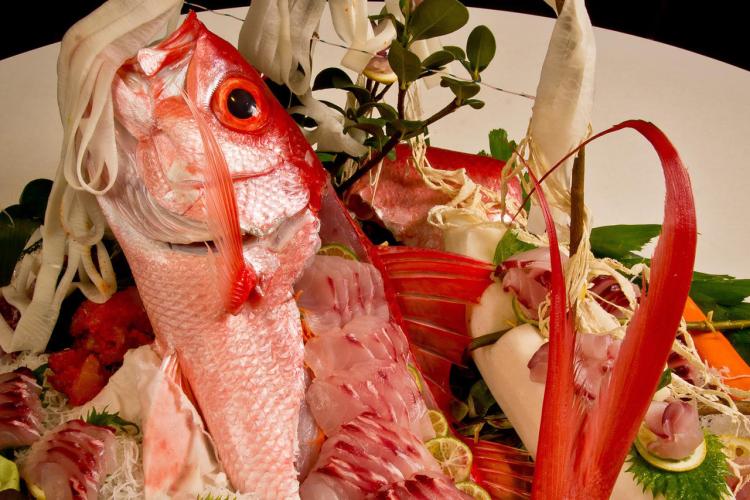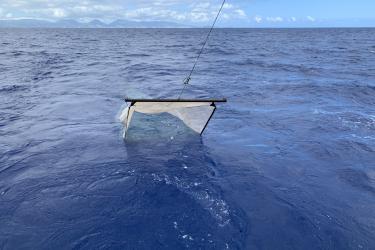In 2017, the Pacific Islands Fisheries Science Center partnered with the Pacific Islands Fisheries Group to conduct an oral history of bottomfishing in Hawaiʻi. The purpose of the Hawaiʻi Bottomfish Heritage Project was to document the rich culture and traditions of this fishery. Earlier this year, we talked about the project on Mike Buck’s radio show, and wrote about what it means to be a bottomfisher on Hawaiʻi Island and on Kauaʻi Island.

The following story traces the cultural importance and preparation of one of Hawai'i’s prized “Deep 7” bottomfish, onaga (Etelis coruscans). The story was provided by Pacific Islands Fisheries Group, modified from a story first printed in their Lawaiʻa Magazine.
Due to its delicate flavor, onaga is often prepared raw as sashimi. Some of Hawai'i’s best chefs are able to create a sashimi dinner with the beautiful red fish that is a truly a work of art.
Hawai'i’s celebrated deep water bottomfish, such as onaga and opakapaka, is rooted in tradition and culture that has evolved to become part of makes Hawaiʻi special. In the late 1880s, early “Issei” or first generation immigrants from Japan and Okinawa brought with them traditions and practices reflective of the time and place from which they came. One such tradition is the decorative onaga sashimi display that is often the centerpiece of special celebrations such as weddings and birthdays.
The final product is an elegant onaga sashimi scenery embodying the traditional celebratory elements of good luck and longevity—the Hawaiʻi way.
Master Chef Kazuhiro Mitake (Kazu) from Tokurri Tei Japanese Restaurant and Sushi Bar in Honolulu prepares this special dish for weddings and other events. Chef Kazu clarifies that this tradition is really a Hawaiʻi thing that you probably won’t find today in Japan. “It’s a remnant of the past and something that evolved based on the local resources available at the time,” Kazu explains.

Master Chef Kazuhiro Mitake (Kazu) from Tokurri Tei Japanese Restaurant and Sushi Bar in Honolulu presents an onaga “bonkei” (Photo courtesy of the Pacific Islands Fisheries Group).
During the sugarcane and pineapple plantation days, everyone was struggling to make a living and celebrations were rare and likely structured around the idea of today’s potluck.
People would bring food dishes from products they had available at the time. Deep sea fish, such as bottomfish and tuna, were particularly prized and difficult to get. Serving onaga or red snapper sashimi was considered a very special delicacy for any celebration back then and carries on today.
Onaga is bright red with nice firm white meat. Its sleek body with large bright eyes and long whisking tail also said to represent longevity. The elegant display of onaga sashimi is skillfully arranged back within the filleted onaga, then adorned with specially-carved daikon (turnip), carrots, cucumbers, and other vegetables.
This presentation is known as “bonkei,” a display made of food depicting decorative scenery. There are many types of bonkei. The fish display is one example of this type of food art. Kazu explained that the first part of the word “bon” literally means tray with the second part “kei” meaning scenery.
When it all comes together, the final product is an elegant onaga sashimi scenery embodying the traditional celebratory elements of good luck and longevity—the Hawaiʻi way.
__________
For more information about this research feel free to contact us: pifsc.socioeconomics@noaa.gov
This project is supported by NOAA Preserve America Initiative and a NOAA Fisheries Pacific Islands Region Cooperative Research grant.




